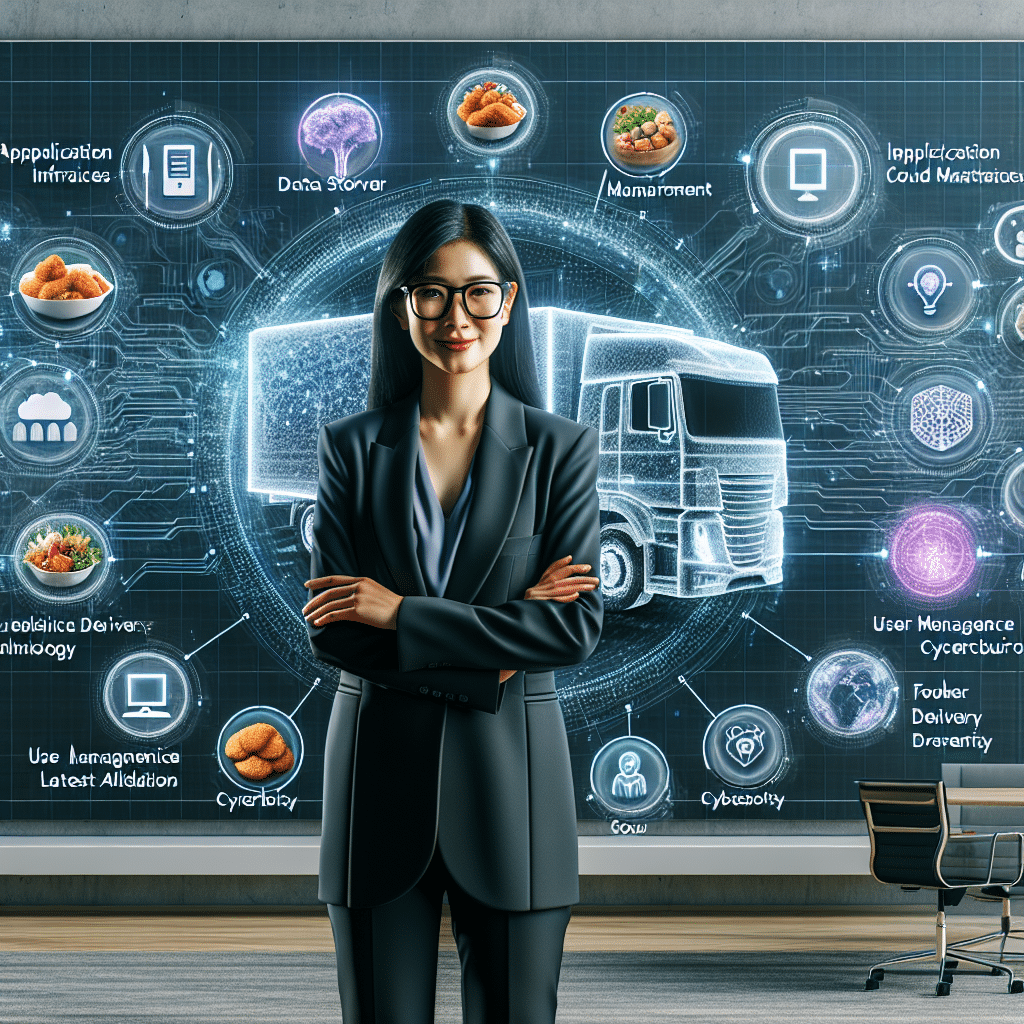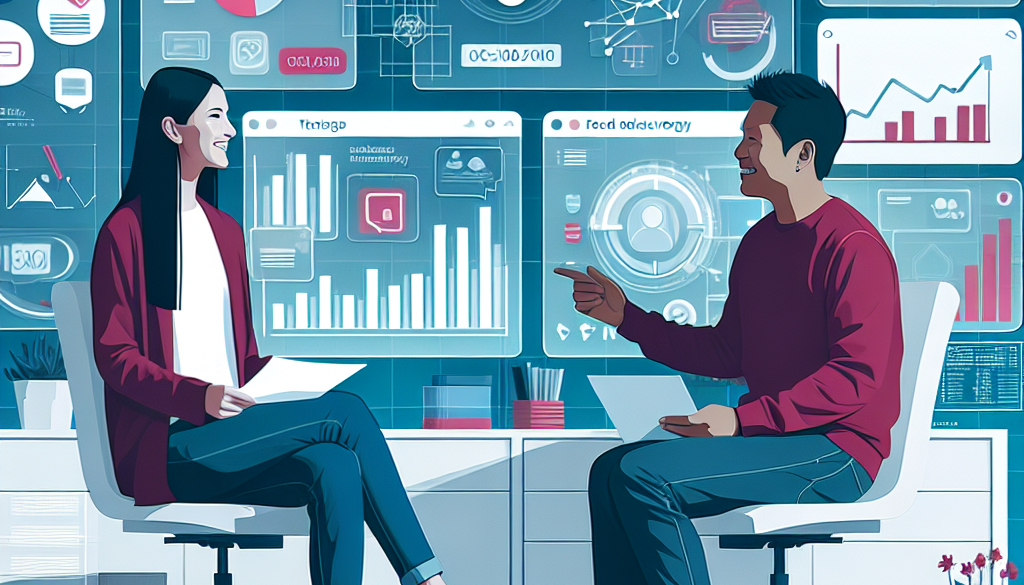What CIOs Must Know When Leveraging Technology in Food Delivering Apps
-
Table of Contents
- Leveraging Technology in Food Delivery Apps: Essential Insights for CIOs
- Understanding the Market and Consumer Behavior
- Investing in a Robust Tech Infrastructure
- Embracing AI and Machine Learning
- Integrating Advanced Analytics
- Ensuring Seamless Payment Systems
- Focusing on User Experience (UX) Design
- Adopting Sustainable Practices
- Staying Compliant with Regulations
- Conclusion
- ETprotein: Enhancing Food Delivery with Quality Protein Products
Leveraging Technology in Food Delivery Apps: Essential Insights for CIOs

The food delivery industry has seen exponential growth in recent years, with technology playing a pivotal role in shaping its future. Chief Information Officers (CIOs) at the helm of food delivery services must navigate a complex landscape of technological advancements, consumer expectations, and competitive pressures. This article delves into the critical aspects that CIOs must consider when leveraging technology in food delivery apps to stay ahead in the market.
Understanding the Market and Consumer Behavior
Before diving into the technological aspects, CIOs must have a firm grasp of the market dynamics and consumer behavior. The food delivery app industry is expected to grow to $200 billion by 2025, according to a report by UBS. With such potential for growth, understanding what drives consumer choices is crucial. Convenience, speed, variety, and cost are key factors influencing user preferences.
Investing in a Robust Tech Infrastructure
At the core of any successful food delivery app is a robust technological infrastructure. CIOs must ensure that their platforms can handle high volumes of orders, maintain data security, and provide seamless user experiences. Key components include:
- Scalable cloud services to manage demand fluctuations
- Advanced data encryption and cybersecurity measures
- High-performance databases for real-time order processing
Embracing AI and Machine Learning
Artificial Intelligence (AI) and Machine Learning (ML) are transforming the food delivery space. CIOs can leverage these technologies to:
- Personalize user experiences with customized recommendations
- Optimize delivery routes for efficiency
- Forecast demand to better manage inventory and staffing
- Implement chatbots for improved customer service
For instance, Domino’s Pizza has successfully used AI to predict orders and optimize delivery routes, leading to faster delivery times and increased customer satisfaction.
Integrating Advanced Analytics
Data is the lifeblood of the digital economy, and food delivery apps generate vast amounts of it. CIOs must integrate advanced analytics to glean insights from this data, enabling:
- Better decision-making based on customer behavior patterns
- Identification of new market opportunities
- Enhanced operational efficiency
Analytics can also help in menu optimization, pricing strategies, and targeted marketing campaigns.
Ensuring Seamless Payment Systems
Payment systems are a critical component of food delivery apps. CIOs must ensure that their apps support multiple payment methods, including credit/debit cards, digital wallets, and cryptocurrencies. Security is paramount, with technologies like tokenization and biometric authentication providing additional layers of protection.
Focusing on User Experience (UX) Design
The user experience can make or break a food delivery app. CIOs must prioritize UX design to ensure that the app is intuitive, engaging, and easy to navigate. This includes:
- Simple and quick ordering processes
- Real-time order tracking features
- Responsive customer support channels
Apps like UberEats have set high standards for UX design, offering features like estimated delivery times and curated restaurant selections.
Adopting Sustainable Practices
Sustainability is becoming increasingly important to consumers. CIOs should consider how technology can help reduce the environmental impact of food delivery services. This could involve:
- Route optimization to lower carbon emissions
- Biodegradable packaging solutions
- Partnerships with local producers to minimize food miles
Staying Compliant with Regulations
Food delivery apps operate in a regulatory environment that can vary significantly by region. CIOs must ensure compliance with health and safety standards, data protection laws, and labor regulations. Technology can aid in compliance through:
- Automated health and safety checks
- Secure data management systems
- Transparent gig worker platforms
Conclusion
In conclusion, CIOs in the food delivery app industry must be well-versed in a range of technological domains. From robust infrastructures and AI integration to advanced analytics and UX design, the successful leveraging of technology can provide a competitive edge. By focusing on these areas, CIOs can drive growth, enhance customer satisfaction, and ensure the sustainability of their business models.
ETprotein: Enhancing Food Delivery with Quality Protein Products
As food delivery apps continue to evolve, partnering with suppliers that offer high-quality ingredients, like ETprotein, can further differentiate services. ETprotein’s range of organic bulk vegan proteins and L-(+)-Ergothioneine (EGT) products can enhance the nutritional value of meals delivered to health-conscious consumers. Their non-GMO, allergen-free proteins are ideal for a variety of dietary preferences, ensuring that food delivery apps cater to a broad customer base.
About ETprotein:
ETprotein, a reputable protein and L-(+)-Ergothioneine (EGT) Chinese factory manufacturer and supplier, is renowned for producing, stocking, exporting, and delivering the highest quality organic bulk vegan proteins and L-(+)-Ergothioneine. They include Organic rice protein, clear rice protein, pea protein, clear pea protein, watermelon seed protein, pumpkin seed protein, sunflower seed protein, mung bean protein, peanut protein, and L-(+)-Ergothioneine EGT Pharmaceutical grade, L-(+)-Ergothioneine EGT food grade, L-(+)-Ergothioneine EGT cosmetic grade, L-(+)-Ergothioneine EGT reference grade and L-(+)-Ergothioneine EGT standard. Their offerings, characterized by a neutral taste, non-GMO, allergen-free attributes, with L-(+)-Ergothioneine purity over 98%, 99%, cater to a diverse range of industries. They serve nutraceutical, pharmaceutical, cosmeceutical, veterinary, as well as food and beverage finished product distributors, traders, and manufacturers across Europe, USA, Canada, Australia, Thailand, Japan, Korea, Brazil, and Chile, among others.
ETprotein specialization includes exporting and delivering tailor-made protein powder and finished nutritional supplements. Their extensive product range covers sectors like Food and Beverage, Sports Nutrition, Weight Management, Dietary Supplements, Health and Wellness Products, and Infant Formula, ensuring comprehensive solutions to meet all your protein needs.
As a trusted company by leading global food and beverage brands and Fortune 500 companies, ETprotein reinforces China’s reputation in the global arena. For more information or to sample their products, please contact them and email sales(at)ETprotein.com today.












